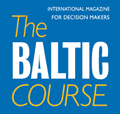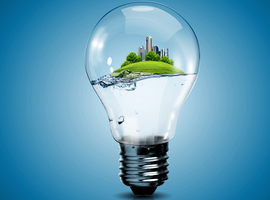
All rights reserved.
You may not copy, reproduce, republish, or otherwise use www.baltic-course.com content
in any way except for your own personal, non-commercial use.
Any other use of content requires the hyperlink to www.baltic-course.com.

Printed: 10.05.2024.
 PrintEnergy security in the Baltics: Energy Union’s integral part
PrintEnergy security in the Baltics: Energy Union’s integral part
 |
|---|
Last year has been a key period for
delivering on main EU priority: ending the enduring energy isolation of some EU
countries. The inauguration of the electricity interconnections LitPol
Link and Nordbalt significantly boosted the vital interconnectivity among
Lithuania, Poland and Sweden.
Also the BalticConnector, the first gas pipeline to connect Estonia and Finland, will significantly increase energy security in the eastern Baltic Sea region. All these projects are excellent examples of how the impact of interconnections goes beyond energy, bringing countries and people closer together.
Consultations on a new Renewable
Energy Directive for the period after 2020 and on the Review of the Energy
Efficiency Directive will open a new chapter in energy transition and delivery
in Europe.
Member states’ wishes will be important for better integrating renewables in the EU’s energy mix, and for implementing COP21 commitments on energy efficiency. It will be also crucial for Commission’s legislative proposals on energy during 2016.
BalticConnector gas pipeline
At the end of December 2015, Finnish Economic Affairs Minister Olli Rehn and EU Climate Action and Energy Commissioner Miguel Arias Cañete, signed a grant agreement of € 5,4 mln. for studies necessary to launch construction works of the BalticConnector gas pipeline.
The BalticConnector will be the first gas pipeline to connect Estonia and Finland and will significantly increase energy security in the eastern Baltic Sea region. It will be able to transport gas in both directions and – together with the gas interconnector Poland-Lithuania – will help finalise the Baltic Gas Ring and will put an end the isolation of Finnish gas market.
EU Commissioner Miguel Arias Cañete underlined that the
grant was a result of close regional cooperation and a proof of true commitment
on all sides to end energy isolation in the Baltics.
The pipeline marks an important first step for connecting the gas markets of the Eastern Baltic Sea region with the rest of the EU gas market. Building missing infrastructure links which is a prerequisite for a resilient, competitive and sustainable EU energy market has been a priority for the European energy union.
Energy security and security of gas supplies are at the cornerstone of the Energy Union. Finland is still fully dependent on gas flows from a single supplier and, until recently, the three Baltic States also had to rely on gas imports from a single gas source, i.e. Russia.
Once completed, the BalticConnector and the gas link between Poland and Lithuania (GIPL) will allow Finland and the Baltic States to diversify their gas sources and routes and thus help to effectively deal with possible supply shortages in the future. It will also help integrating the entire region into the EU's internal energy market.
The grant agreement is an amendment to an earlier grant agreement for the same project signed in May 2015 to transfer the grant from Gasum Oy to the new Finnish project promoter, a newly established state-owned company, Baltic Connector Oy.
The BalticConnector has been a European project of common interest since 2013. The pipeline will consist of three sections – the Finnish onshore section (22 km), the offshore section (81 km) and the Estonian onshore section (47 km). The capacity of the pipeline will be 7.2 million cubic meters per day. The total cost of the project is foreseen to be €250 million; the pipeline is expected to be operational by 2020.
Baltic electricity ring
Two new electricity interconnections connecting Lithuania
to Poland and Sweden have been officially inaugurated also in December 2015.
The LitPol Link connects Alytus in
Lithuania with Elk in Poland and the Nordbalt links up Nybro in Sweden and
Klaipeda in Lithuania. These two links will add 1200 MW of interconnection
capacity to the Baltic region.
This means that, for the first time, the electricity markets of the Baltic States will be connected to the Swedish and Polish electricity networks. Before these projects were completed, the Baltic Sea region was connected to the EU electricity market via just two connections – Estlink 1 and 2 - which run between Finland and Estonia.
A true Energy Union
is based on a strategy promoting electricity to be able to flow freely across
borders and bringing more security of supply for electricity consumers while boosting
competition on the electricity market.
The new interconnections will significantly increase electricity
links between Poland and of the three Baltic States (Estonia, Latvia and
Lithuania); they will be considered as one entity in their integration into the
EU electricity market. Prior to the building of LitPol Link and Nordbalt, both
Poland and the Baltic countries did not meet the minimum EU 10%
interconnection target.
Lithuanian Commissioner Vytenis Andriukaitis, responsible for health and food safety mentioned that the two new electricity interconnections mark an important milestone in integrating the Baltic States and Poland with the rest of the European electricity market.
The two networks will have a huge impact on the European
electricity network, reaching well beyond the three EU countries they directly
involve.
LitPol Link featured on the Commission's list of Projects of Common Interest, which gave it access to a €27,4 mln from the Connecting Europe Facility grant for works carried out in Lithuania. It also benefitted from the EU's structural funds for construction works carried out in Poland, a loan from the European Investment Bank of €55 million and a Nordic Investment Bank loan of €50 million. LitPol Link will also boost energy security for Lithuania and Northern Poland.
Nordbalt will help develop the electricity market in the Baltic Sea region. The project has been granted €131 mln. under the European Energy Programme for Recovery. Nordbalt will also help hydro energy produced in Nordic countries to flow towards Lithuania and the other two Baltic countries.
Back in 2008, the Baltic countries were effectively an 'energy island'. This situation gave rise to the creation of the Baltic Energy Market Integration Plan (BEMIP) under which LitPol Link and Nordbalt were identified as priority projects.
Currently, the Baltic electricity grid is synchronised with the Russian and Belorussian grids. The new interconnections could lay the technical foundations for synchronising the Baltic electricity grid with the rest of Europe.
Renewables
Energy
production, which accounts for about 60 per cent of global carbon emissions, is
a top priority in combating climate change.
In March 2015, the leaders of EU-28 states set out the first steps of a European energy union. The European Council strengthened its commitment for affordable, secure and sustainable energy within the EU. At the Council, the discussions focused on energy security and transparency in gas contracts.
For the first time at a UN climate
conference (COP-21 in December 2015), renewables played a central role as part
of the ‘renewable energy track’. Two directions are most viable in the EU
energy integration:
= Renewables in cities: Urban populations are rapidly expanding around the world with some 800,000 new urban dwellers every week. Today, cities are waking up to renewable energy, and the EU states are expected to show how renewables are being integrated into urban energy networks. The EU policy will also focus on how to accelerate the use of renewables in cities.
See: https://ec.europa.eu/energy/en/workshop-renewable-energy-cities
= Renewables in agriculture: Food production accounts for 30% of the world’s energy consumption and over 20% of the world’s greenhouse gas emissions. Modern agriculture is heavily dependent on fossil fuels, but the sector is beginning to modernise.
From agriculture to food retail, renewable energy solutions are being implemented across the entire food production chain. This EU strategy will show how the latest technologies could be used in reducing greenhouse gas emissions in the agriculture sector while meeting tomorrow’s demand for food and energy in a sustainable way.
See: https://ec.europa.eu/energy/en/workshop-renewable-energy-and-agriculture